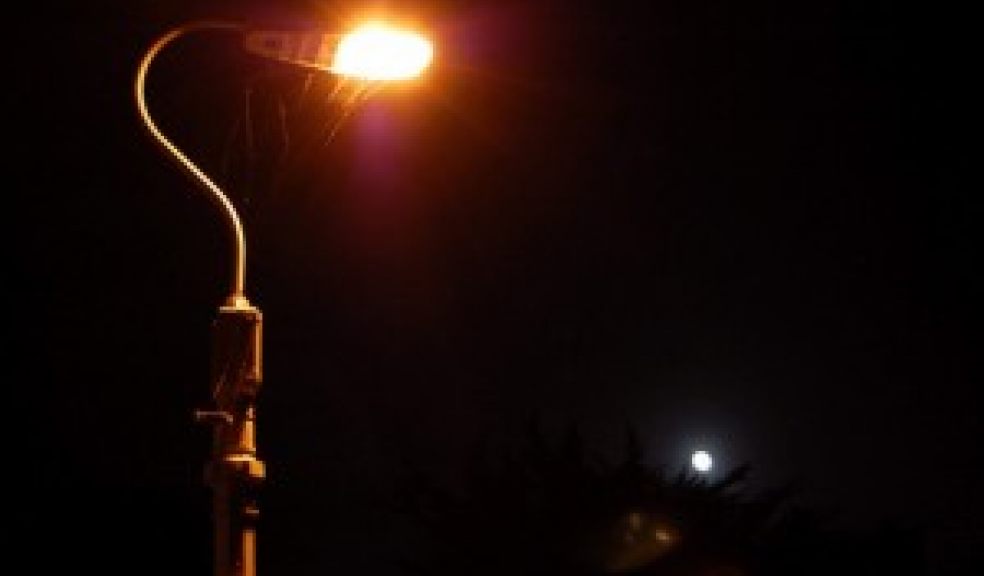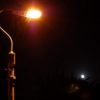
Exeter streetlights to switch off this week
Around 1,200 streetlights in residential streets in St Thomas and Exwick will be converted to part-night lighting this week (Thursday 8 May).
Streetlights previously on all-night will be switched off from about 12:30am to 5:30am, before coming on again until dawn.
The change is the latest phase of Devon County Council’s controversial programme to reduce costs and carbon emissions, having already converted over 44,000 residential street lights across the county.
Lighting on the main roads and busiest routes, including Exwick Road, Okehampton Street, Redhills and Kinnerton Way, will remain unchanged, operating all night.
Councillor Stuart Hughes, Devon County Council Cabinet Member for Highway Management, said: “The on-going introduction of part night street lighting across Devon is proving successful in cutting carbon emissions and costs. We need to reduce our energy bills and emissions – just as any business or household would.
“The feedback we received during the city-wide consultation events has helped develop the scheme and we have been able to create a network of busy ‘walking home routes’ which will remain lit all night. Busy areas of the city centre and main roads will also remain lit all night.”
While the council say that the five-year conversion programme has already reduced CO2 emissions by more than 4,000 tonnes and is saving around £450,000 a year from the Council’s electricity bill, concerns have been raised surrounding the safety of the move.
Last month (10 April) insurers, the AA, hit out against part-night lighting projects claiming that it made roads “unsafe”.
In a study of accidents on UK roads over the last five years, the AA reported, that while the number of night-time accident in bad weather had fallen the drop was significantly reduced on unlit roads.
AA President Edmund King commenting on the street lighting study, said: “Worse accident rates on roads with street lights turned off or not present is an insidious threat that has crept in literally under the cover of darkness.
“Many local authorities based their risk assessment on police accident profiles for the affected roads. This had two huge drawbacks.
“Firstly and fundamentally, roads that are safe when lit can become unsafe with the lights switched off, but that is only shown when drivers, cyclists, bikers and pedestrians start to get hurt and killed. Some local authorities have changed their minds after casualties- Powys in 2009 and the scheme pioneers Buckinghamshire in 2012 – but why did people have to become street light victims to prove the point?
“Secondly, with an extra casualty here and there, it is difficult to spot a creeping overall trend that might suggest something is dangerously wrong with a blackout.
“The AA’s analysis of reported accidents since 2007 shows that the faster the road and the worse the weather, the much higher the threat of accidents on urban roads that were previously lit through the night. Why? Because lighting illuminates potential hazards and gives road users a greater chance of avoiding them."
Despite Mr King’s comments the study also found that AA members in the South West were largely in favour of the part-night lighting programme, more so than anywhere else in the UK.
Responding to the study last month a spokesman for the County Council said: “We wouldn’t argue that some busier roads, safe when lit, can become unsafe when not lit, but Devon’s scheme does not include busier routes.
“The schemes we’re adopting affect only residential areas where traffic between midnight and 5am is negligible. Busier routes into and out of the city, including pedestrian routes, are remaining lit.
“We welcome the findings of the AA’s motoring panel; most in the south west agreeing that switching off street lights between midnight and 5am is a good initiative, and least agreeing that doing so encourages vandalism and bad behaviour.”
Devon County Council is responsible for nearly 79,000 street lights, which currently costs around £3.4million in electricity and produces nearly 20,000 tonnes of CO2.
This accounts for around 30% of the County Council’s annual emissions, which stands at almost 62,000 tonnes of CO2, and is the equivalent of the total annual energy use of 7,300 average Devon homes or a town about the size of Honiton.
Residents can contact the Council’s customer service centre on 0845 155 1004, or email lighting@devon.gov.uk or write to Street Lighting, Devon County Council, Matford Lane Offices, County Hall, Topsham Road, Exeter, EX2 4QW.

















